Overview
Goal
Make it through all events in the encounter deck.
Encounter Deck
The encounter deck represents your journey. It contains bosses, treasures, and adventures.
Boss Cards
You will need to defeat bosses to progress and make it through the encounter deck. Bosses have a type, at the bottom left, and a power, at the bottom right.
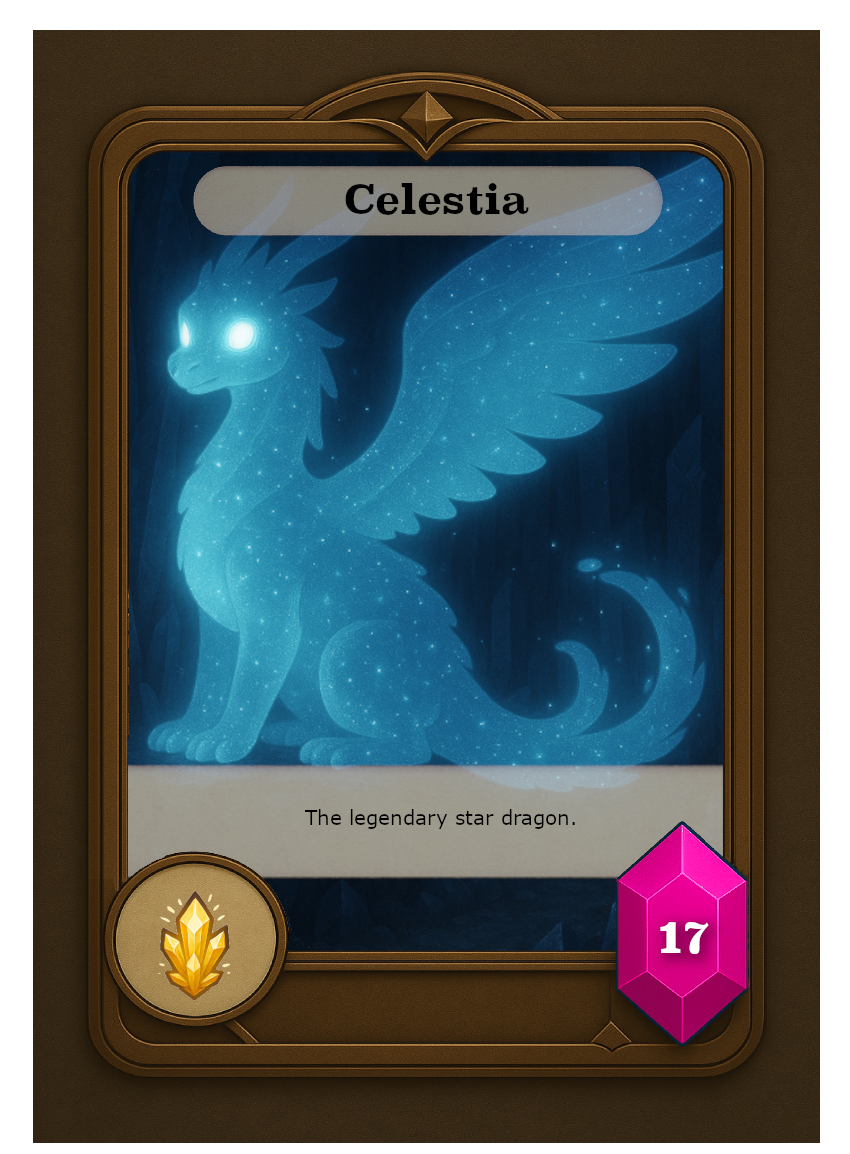
Creature Cards
Creature cards are your main resource. Use them to beat bosses! Creature cards also have a type, at the bottom left, and a power, at the bottom right.
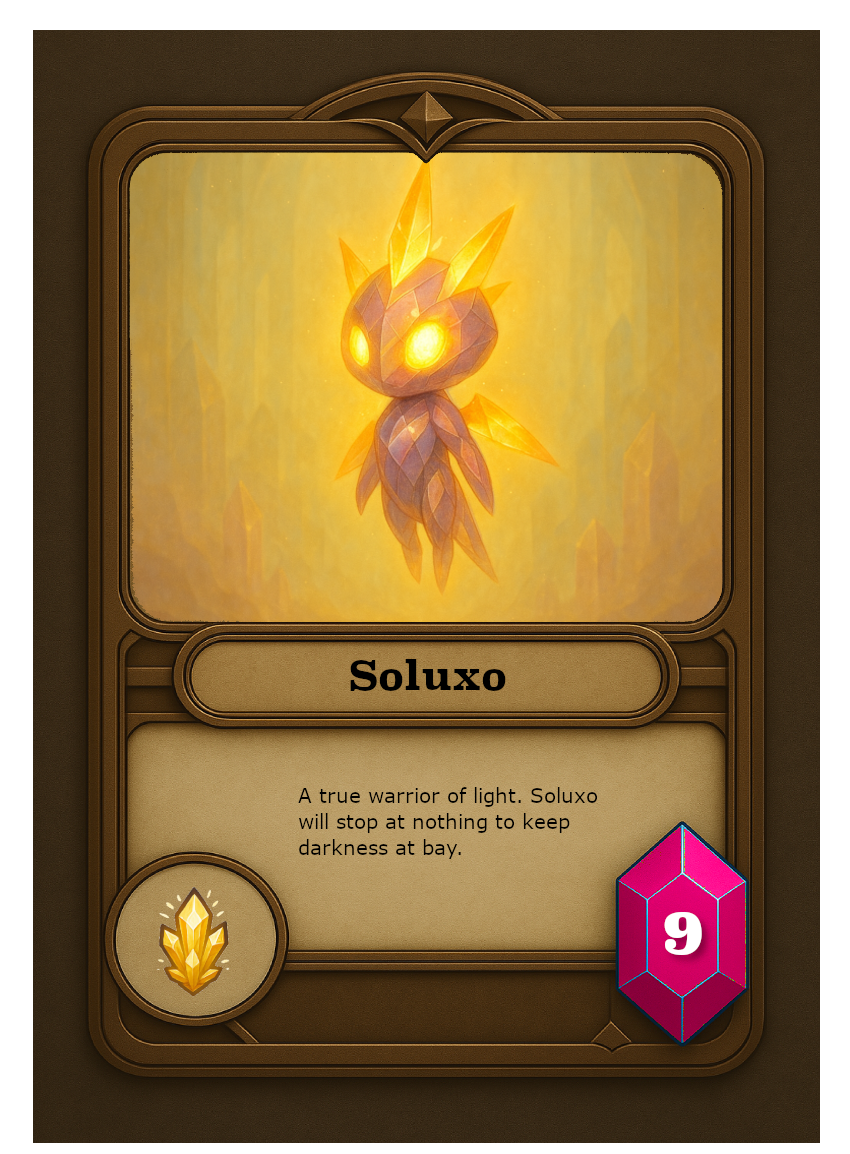
Treasure Cards
Treasure cards give you special powers. They can either be a normal treasure, which has a positive effect, or a cursed treasure, making the game harder.
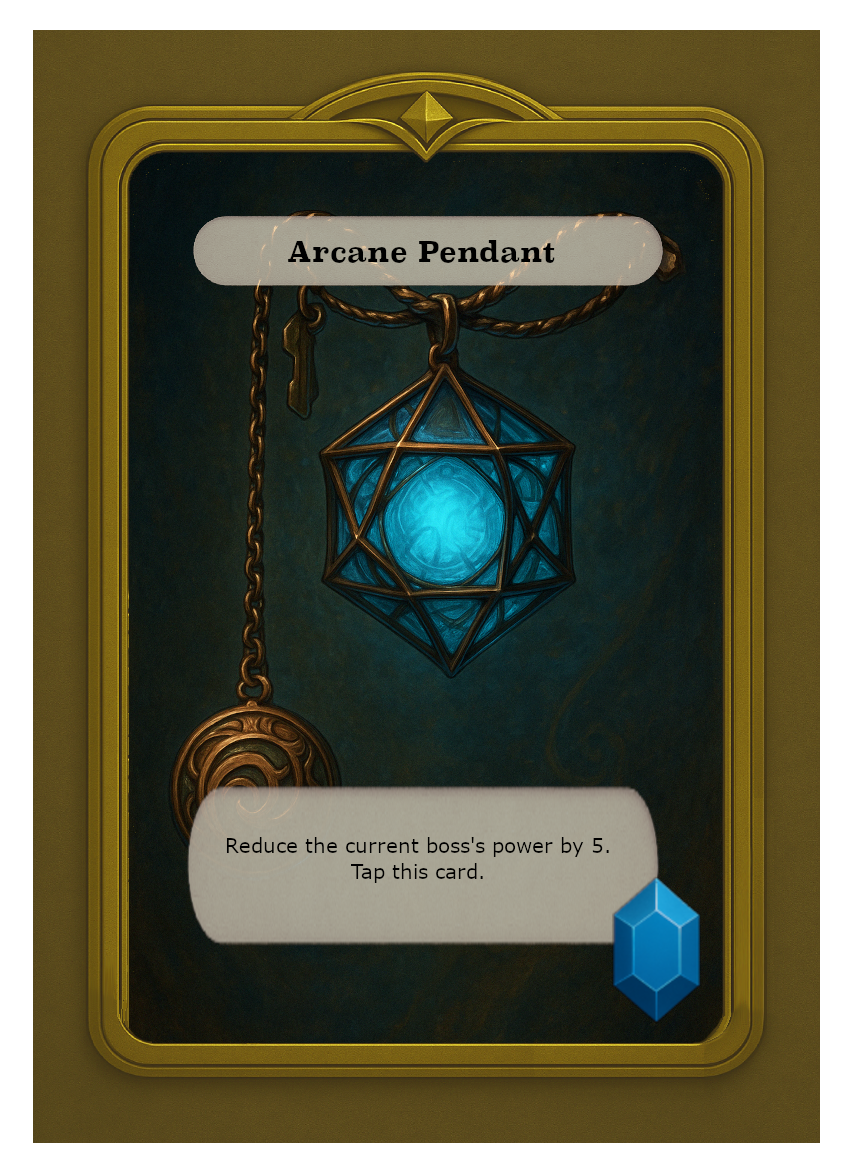
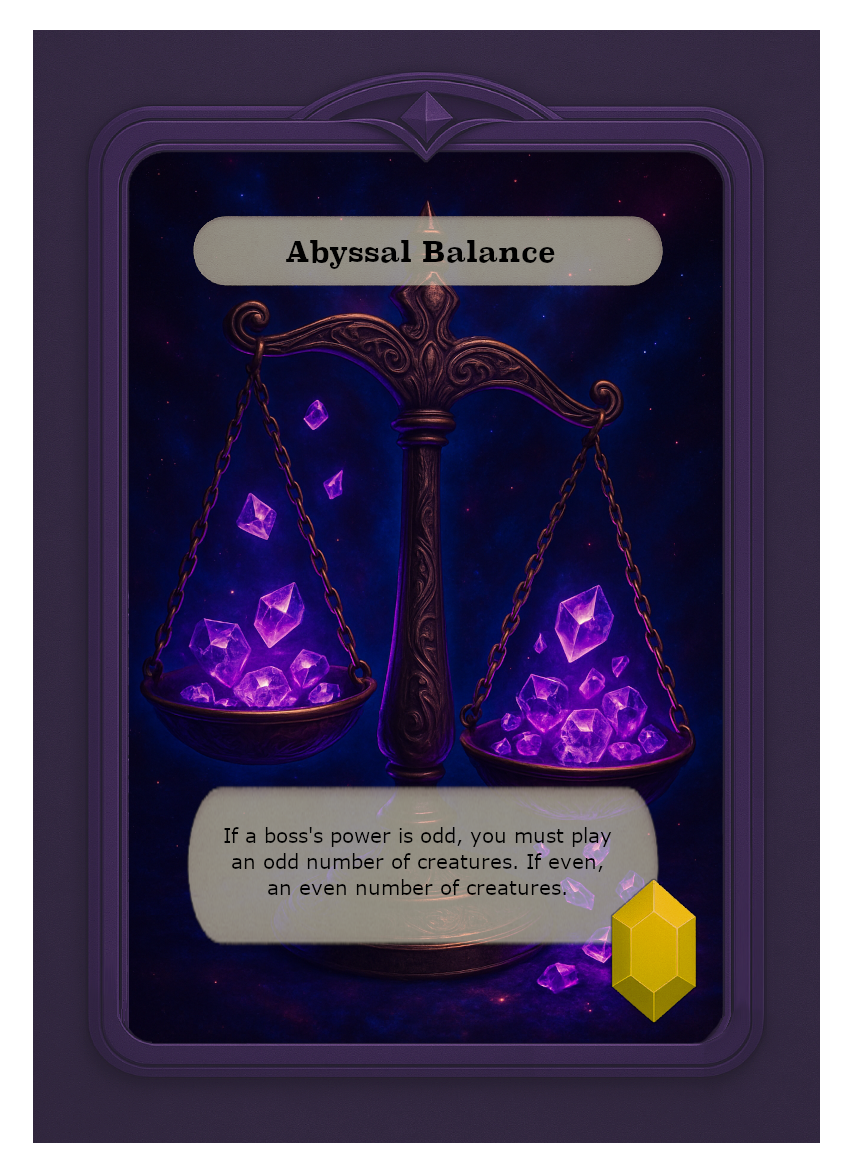
Adventure Cards
Creatures and bosses have different types, which affect whether they have advantage or disadvantage. For example, fire has advantage against ice, and therefore gets bonus power.
Adventure cards change what bonuses or penalties a creature gets.
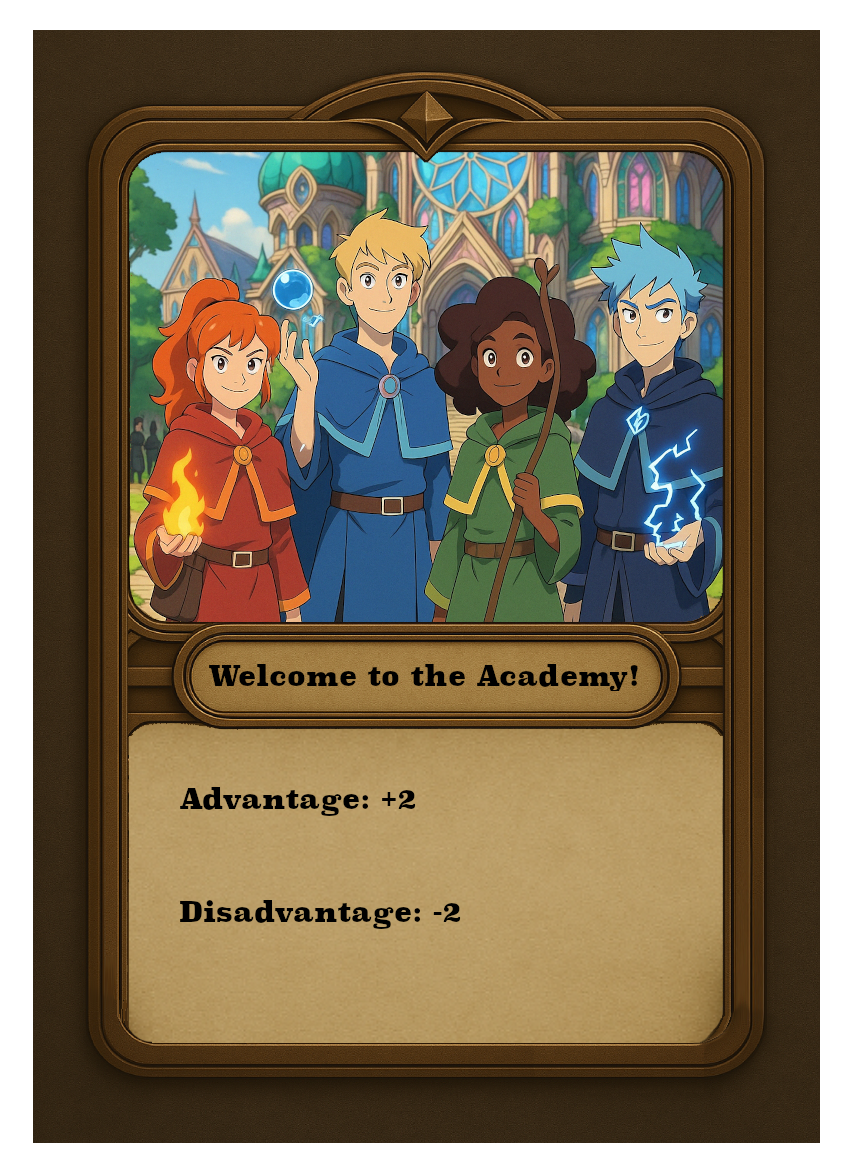

Win/Lose Conditions
If you run out of creature cards before the encounter deck is complete, you lose. If you get through every card in the encounter, you win!
Classic Mode
Setup
Number of players
You can play with any number of players! It's you against the encounter deck.
Create your decks
You will need to create an encounter deck, and a creature deck for each player.
Encounter deck
An encounter deck contains boss cards, treasure cards, and adventure cards. You can have any number of each. More treasures and adventures will make the game more dynamic. More bosses and cursed treasures will make the game harder.
Creature deck
A creature deck contains only creature cards. This may contain also any number of cards, but it should be an appropriate number for the campaign - too few will be too hard (maybe even impossible!), and too many will be too easy.
Arrange the game
You have 10 health points. Get 10 tokens to represent your health.
Choose an adventure card to start as your "active adventure". At any point in time, there is one adventure that dictates what bonuses and penalties creatures get (more on that later!). "Welcome to the Academy" is a great novice adventure.
Draw cards
Draw a total of 6 cards.
Play the game
An encounter deck contains boss cards, treasure cards, and adventure cards. You can have any number of each. More treasures and adventures will make the game more dynamic. More bosses and cursed treasures will make the game harder.
Creature deck
A creature deck contains only creature cards. This may contain also any number of cards, but it should be an appropriate number for the campaign - too few will be too hard (maybe even impossible!), and too many will be too easy.
Arrange the game
Choose an adventure card to start as your "active adventure". At any point in time, there is one adventure that dictates what bonuses and penalties creatures get (more on that later!). "Welcome to the Academy" is a great novice adventure.
A good rule of thumb is to have approximately three times as many creature cards as boss cards, with a balanced variety of numbers.
Gameplay
- The first turn of the game
- Flip over the top card of the encounter deck.
- If it's a treasure, but it in your treasure stash - anywhere off to the side where you can keep track of your collected treasure.
- If it's an adventure card, replace the current active adventure card with the new adventure card.
- If it's a boss, you must beat it!
- How to beat a boss
- Simple: you must play creature cards who's power adds up to EXACTLY the boss's power. Not more, not less - exact!
- You may play as many creature cards as you want, but the fewer you use, the more likely you will have enough creatures to make it through the entire encounter deck.
- Type advantages
- Your creature cards may get a bonus or a penalty depending on their type and the boss's type.
- For example, if the boss is an ice type and you creature is a fire type, you have "advantage" and get a bonus! However, if your creature is an ice type and the boss is a fire type, you will have "disadvantage", and your creature will be penalized.
- To apply the bonus or penalty, read the corresponding rule on the active adventure card.
- What happens if you can't find a sum?
- At any point in time, you may discard a creature card and draw another. Remember: running out of cards means you lose, so use this carefully!
- End of turn
- After you've played your creature cards, move them and the boss to the discard pile.
- Then, draw the same number of cards as you played, and continue on to the next encounter!
Kid's Mode
No discarding, no drawing, no complicated rules. Just math!
- Create an encounter deck of only boss creatures and treasures.
- Pick a bunch of creature cards, at least one of each number, and lie them face up.
- To beat a boss, play cards from your hand whose power add up to the boss's power.
- Continue until you've beat all bosses and collected all treasures!